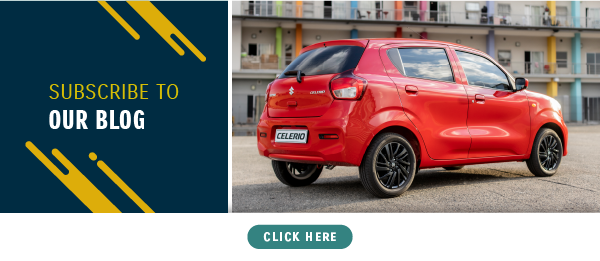Published: 17 Dec 2022
Author: Brendon Carpenter and Chelsy Pinto

It can be daunting to travel with your newborn the first time (and every other time). You want to ensure your child is as safe as possible and be reassured that you are receiving the best possible advice.
Whether you’re a new parent or an ‘old hand’ in the game, nothing is more important than the safety of your child. Traveling with a newborn can be a challenge, but if you are well prepared and know you have followed all the safety precautions, it will become a simpler and less nerve-wracking experience.
The first step is to make sure you are getting - and following - the right advice. There is so much information to be found online and even the ‘top tips’ can conflict. Therefore, the best advice is to narrow your reading material down to a handful of reputable experts.
Suzuki recently partnered with Occupational Therapist and IOSH certified Car Seat Technician, Julie Monson, the founder of the popular and helpful Facebook page Car Seat Support South Africa, and her business (with a very helpful blog) Precious Cargo, to create a “Family Guide” to in-car safety for children.
Below is a summarised guideline to traveling with an infant:
-
How soon can I travel with my infant?
Your best resource is your doctor. As all babies are different, your doctor will give you the best advice on whether you should wait a few weeks (sometimes for their immune systems to strengthen), or whether your infant is ready to travel.
-
Get an infant car seat
There are hundreds of infant seat options and many of these are labelled as ‘multi-stage’ meaning they can be adapted as the baby grows. According to Julie, it is best to opt for an infant seat as these have been designed around the anatomy of an infant - no exceptions. You want a seat that is designed purely to keep your infant safe.
-
Test drive your seat!
With so much to do before the baby arrives, many parents forget to check the fit of their infant seat in their car. Not all infant seats and all cars are a perfect match. Make sure you are able to do a trial run with your top three seat choices and see which one fits best and is easiest for you to operate.
It’s also worth practising with the seat a few times before you take your infant for their first drive. This will ensure you know how everything operates and will also keep you and your baby calm throughout the process.
-
Where should I place the infant seat?
An infant seat can be placed behind the driver or front passenger seat (depending on how many adults will also be in the vehicle), and it must always be rear-facing as this is the safest position for an infant. It might feel unnatural to have your baby in the back and facing away from you, but this is the absolute safest position for an infant.
-
How long can an infant be in a car seat?
Again, your best resource will be your doctor as it may depend on your baby’s size and stage of development. That said, it’s not advised to do long car trips with an infant. Remember that an infant’s neck muscles are still very weak, which means that positional asphyxiation is a risk, so long trips are not advised with infants.
Additional Tips and resources:
Not all car seats are created equal, and there are some minimum requirements your car seats should meet before they even make it to your shortlist.
- The car seat needs ECE approval
- It should be on the NRCS list of car seats approved for sale in South Africa. Julie says, “If it is not on the NRCS homologated list, it may be a fake or illegal car seat.”
- We recommend reading through all the safety reviews, which can be found on Car Seat Support South Africa. These are all the available safety reviews of the car seats sold legally in South Africa.
For further reading, please see our comprehensive Family Guide.
Subscribe to our blog and get all our exciting content delivered to you either weekly or monthly.



.png)
